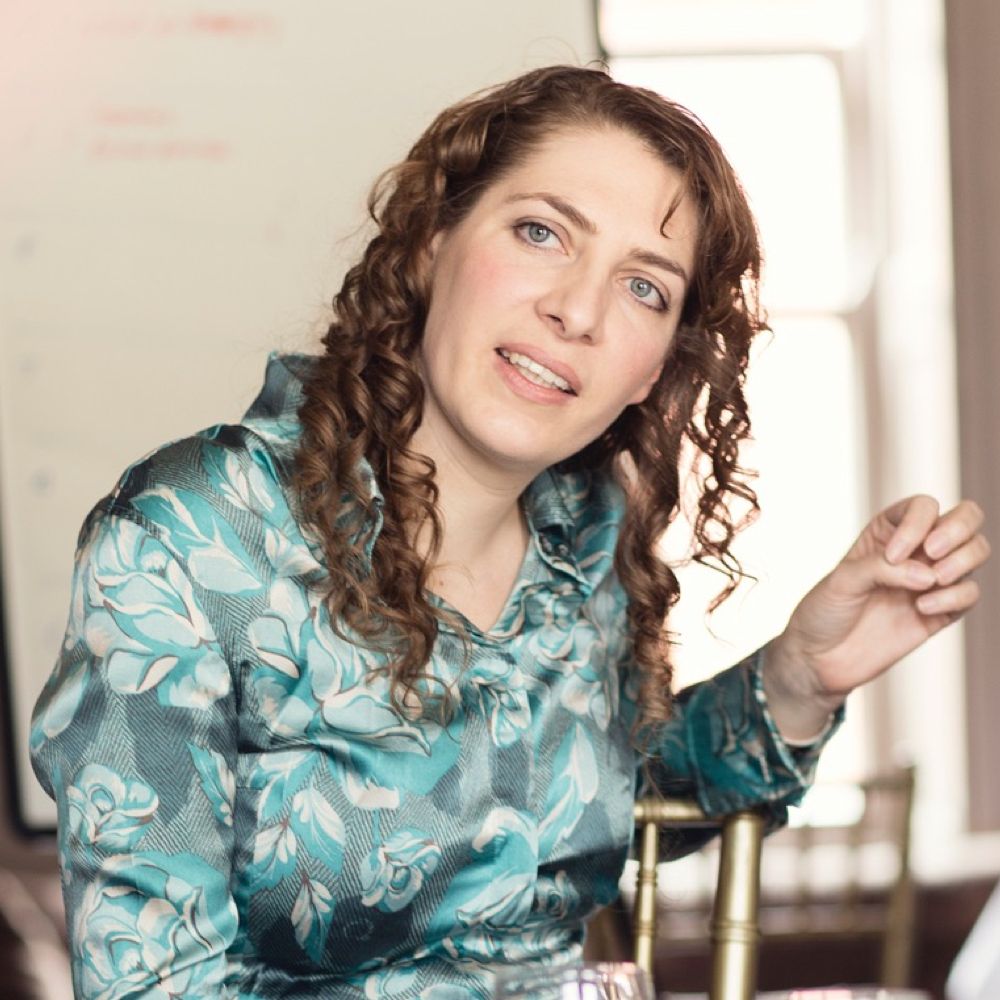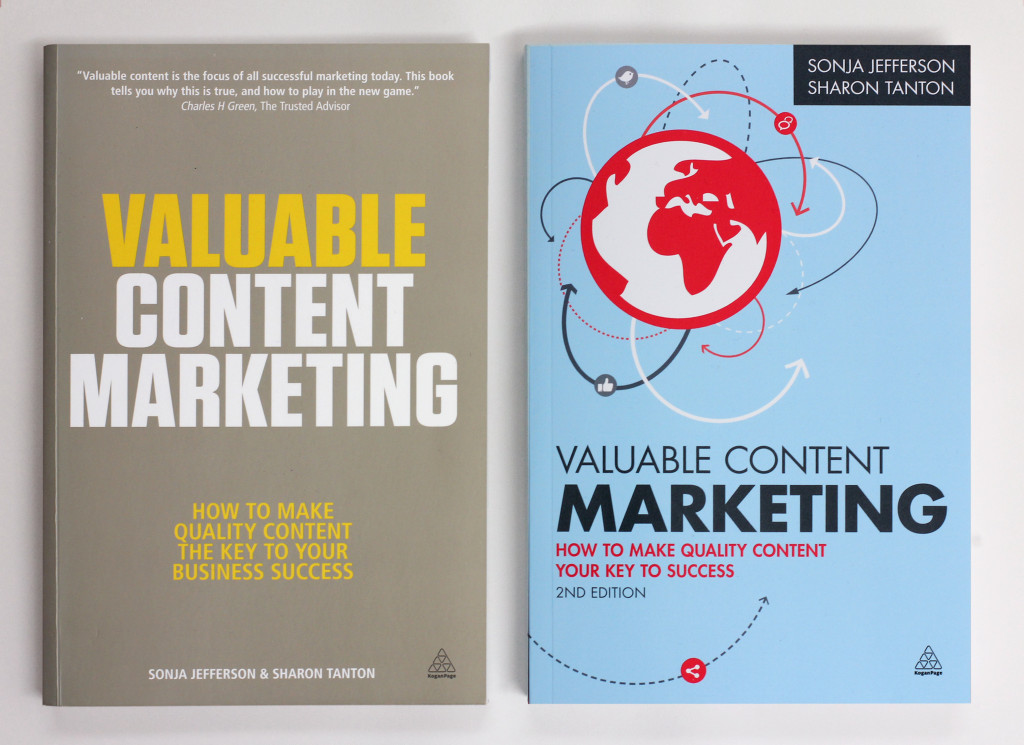As you look back over your year of content creation are there any pieces that jump out at you? Was there something that flew higher and further than you were expecting or opened exciting new doors for your business?
We’ve seen some fabulous content this year, but what content has proved most valuable and why? As 2015 draws to a close we decided to put this question to a few of our favourite content creators.
It might seem that it’s getting harder to make an impact with content, but as their stories show, creating and sharing the valuable stuff remains a brilliant way to build your business.
So here it is – a celebration of valuable content produced in 2015, including simple checklists, powerful blog posts, guides, a map and even a board game! Take inspiration for your content in 2016, and look out for some fascinating insight into the value that good content can bring for a business too.
This is longer than your average blog post because it’s jam-packed full of detail. So pour yourself a festive sherry and dig in!
1 Henneke Duistermaat’s experimental blog post
“2015 was a year of steady blog writing without any bigger content marketing projects. My blog remains the heart and engine of my business.
My most successful blog post was a metaphor-style one about editing: 4 Types of Weak Words: How to Spice Up Bland Content. Not only did it generate a high number of new subscribers, it was also my most shared post plus it had good engagement in the comment section.
Often with blogging, we tend to look at what has worked in the past and try to repeat our successes. We fall back on proven formulas. But the post about weak words was an experiment. I had done a recipe-drawing course and wanted to include the idea of a hand-drawn recipe in a blog post about writing.
Here’s to more creative blogging in 2016!”
Henneke Duistermaat, Enchanting Marketing www.enchantingmarketing.com
2 Bryony Thomas’s simple Christmas checklist
“It actually breaks my heart a little to answer this question. But, I’m hoping my honesty will gladden any of you time-poor content creators out there! The lesson in this is that the effort you put in does not always have a direct correlation with the effectiveness of what you create!
“Useful and timely will win over razzmatazz almost every time.”
Our most effective piece, by almost all measures – traffic, engagement, data acquisition & sales enquirers has been our very simple Christmas Marketing Checklist, which took about 2-hours total and no money to create.
Now here’s the painful bit… it has hit more on every one of those measures than the mammoth 24-day, 26-video, £20k give away we did last year!! Why? Because it’s useful and timely, and that will win over razzmatazz almost every time!”
Bryony Thomas, author and owner of Watertight Marketing www.watertightmarketing.com
3 Paul Hajek’s jargon-free legal SlideShare
“Blogging has been our mainstay here at Clutton Cox Solicitors. It’s what we are primarily known for in the legal, social media space. We have branched out this year into Instagram and Pinterest to attract a different and new audience to our content.
It’s clear to us that other law firms simply do not inform or educate clients on certain aspects of buying and selling a home – the Conveyancing process. Our mantra has always been: clients ask – we answer.
Our most read blog of 2015 was What Will a Local Search Unlock in Your Dream Home? with c. 10,000 views. But our most successful new content was a SlideShare presentation called, “How to Get All Your Ducks in a Row Between Exchange and Completion – Your 7 Point Plan for a Stress- Free Big Day” with c. 13,000 views.
“Our mantra has always been: clients ask – we answer.”
As lawyers we can become somewhat blasé about using the terms exchanging contracts and agreeing completion (moving in) dates. For clients there is a big knowledge gap in what they need to do and achieve before the big day arrives.
We see SlideShare as a relatively uninhabited (by other law firms) format for publishing informative, educational and fun legal content. We were galvanised by SlideShare with the success of “What’s the Name of that Legal Thingy? – an A-Z Guide through the jargon of Conveyancing” now with over 23,000 views.
Our content is now found and more importantly shared beyond our normal local demographic, and we are attracting and winning clients, as a result, in all parts of the country.
The success of our strategy provides us with greater impetus to produce even more varied and exciting legal content in 2016.”
Paul Hajek, Director at Clutton Cox Solicitors www.cluttoncox.co.uk
4 Radix Communication’s board game
“Our most successful content in 2015 was our board game, Funnel! The Content Marketing Strategy Game.
We read Joe Pulizzi’s Epic Content Marketing. Joe urges marketers to be bold and innovative in their content creation. We had a discussion about what type of content we could create for Radix that would be innovative and stand out. Kieran suggested a board game.
“Be bold and innovative in your content creation.” Joe Pulizzi
We couldn’t think of any reason not to do it, so we went ahead! It took a good 16 months from initial concept to beautifully manufactured board game. Steve wrote a blog about the whole process here.
This was designed to be an awareness piece more than anything else. We wanted to produce something that we could send to existing clients, marketing agencies we’d like to work with; and generally people we like – in the hope that those people would like it enough to share it on social media, keep it in their offices and remember who Radix are.
“A lasting piece of content, which keeps the Radix brand visible in people’s workplaces.”
It did really well on that score. Lots of people took photos and shared it on Twitter and LinkedIn, including some key industry influencers (like you Sonja and Sharon!). One agency wrote a blog inspired by it. Lots of people got in touch to say they loved it. It got a really nice write-up in B2B Marketing magazine. It got us talking to four big B2B marketing agencies (our main type of client) who we hadn’t had contact with before. It essentially got us noticed in the industry and generated a lot of goodwill towards Radix.
I can’t say it directly generated any business, but it wasn’t designed for that. (Though our secret hope was that someone would commission us to create a board game for them, which sadly hasn’t happened – yet…)
Why did it work? Firstly it was something very different: to our knowledge no one has created a board game about content marketing strategy before!
It was also by its nature a physical piece; a very nice piece of high-end direct mail. People not only opened it, played it, liked it and shared photos of it, but they also hung on to it. It would be hard to throw away something that nice. So it’s a lasting (and relatively big) piece of content, which keeps the Radix brand visible in people’s workplaces.
“It ticks a lot of good boxes: innovative, shareable, lasting, educational and fun.”
Then there’s the care and love and skill that went into designing it. It was designed by people who love board games and intricate strategic gameplay, and who also understand the world of content marketing. The artwork was done by fab illustrator and comics artist Keith Sparrow, who did a fantastic job of making it look like a proper commercial board game. It’s a very deep, well thought out piece of content, which we took our time over.
The game has at its heart a core message of ours – which is that you need to match the right writer to the right type of marketing content for best results – but in essence it’s really just a fun game to play. So it ticks a lot of good boxes: innovative, shareable, lasting, educational and fun.
And finally, it didn’t cost all that much. We spent a total of £6,000 on artwork, production, postage & packing and videoing of our two tutorial videos, and the rest of it (game design, prototyping, play-testing, project management, fulfilment, landing page, etc.) we did in-house. So as well as all the other good stuff about it, it was also pretty cost-effective.”
Fiona Campbell-Howes, Founder of Radix Communications, http://radix-communications.com
5 Andrea P. Howe’s weekly tips

Andrea P. Howe
“The content that worked best for The Get Real Project this year was our Weekly Tips by email.
It was a client comment that drove me to create these. Several years ago, my client Kenda mentioned how another training provider offered short weekly emails with insights and ideas related to his content (employee engagement). She spoke about how it made a difference to her and other learners in her organization by keeping the topic top-of-mind. That got me thinking, although all I did was think about it for several years LOL. When I started working with you (Sharon and Sonja), you encouraged me to find a way to regularly post content on The Get Real Project website. So I took the plunge and launched the service when the new website went live.
The tips have proved very popular. We just surveyed our subscribers (our list has quadrupled in the last year, and we’ve only ever had 16 unsubscribes) and were delighted to read comments like, “insightful, practical and entertaining” and “story-based and actionable.”
As for the impact on our business: First and foremost, the tips give us the “feel good” satisfaction of knowing we’re making a difference for our clients because we’re routinely providing helpful content. (We have a strict “no promo” policy with our tips.) I regularly get emails from subscribers telling me how much they appreciated a particular tip, and that it seemed to arrive at just the right time. That’s very gratifying.
Weekly Tips also give us a relatively easy way of staying in touch with a lot of clients at once. At the end of our workshops, we offer people the opportunity to sign up then and there (they write their names and emails on a sign-up sheet so we can then load them directly into our distribution database). We also have quite a few LinkedIn followers who faithfully read our tips online.
The Tips also force me, as the business owner and thought leader, to share and refine my thinking on the subject matter that I’ve built my career around. Believe me, there are weeks when cranking out another tip—on top of everything else on the To Do List—feels like a real chore. I do it anyway because I feel accountable to our subscribers. And somehow it’s always those weeks when I get a personal message saying, “Thank you, just what I needed.” I reply back saying, “Likewise!”
“The tips force me to share and refine my thinking on the subject matter that I’ve built my career around.”
Why has it worked so well? The weekly tips are short, and often provocative. They include a “make it real” challenge (a way to apply the tip) and links to other reading if you want to dig deeper. More than all of that, though, subscribers say they really like the stories that I share.
The tips are written and signed by me, and I make an effort to personalize the content. I’m willing to tell on myself, too, by sharing examples of when I’ve failed to walk my talk. It felt risky when I first started writing in this more personal way—and truth be told, sometimes it still feels risky.
The payoff is a stronger connection between subscribers and the content, and between subscribers and me.”
Andrea P. Howe, Founder of The Get Real Project, and co-author of The Trusted Advisor Fieldbook www.thegetrealproject.com
6 Project One’s varied content around one big subject

Geoff Mason
“Our best content this year was around the subject of Steering Real Change. We created it simply because one of our clients asked us to. It’s proved very useful to that client but it’s also raised our awareness with several others (who use the material as their in-house standard and approach to steering), and amongst some of our Real Change Club members too (who particularly liked the tongue-in-cheek Dysfunctional Steering Group article).
I think it worked well because we created a number of pieces of content in a variety of styles around one big topic – a checklist so people could quickly see if their steering group was OK or not, a guide so that on further reading people could get a view on how to do steering well, and a humorous article on dysfunctional steering groups to demonstrate this does not have to be a dry topic.
One big subject and a mix of content styles and formats to help make a difference to those wrestling with the challenge of delivering complex business change.”
Geoff Mason, Content Director at Project One www.projectone.com
7 Designer Christian Tait’s blog post for marketers.

christian Tait
“My blog post ‘Typography – a marketer’s guide’ seems to have gained the most interest.
The reason I created it? Primarily, my own interest in typography I guess, but also trying to talk to marketers about its importance, variety, and how using different fonts can completely change the feel of a piece of marketing or, even more so, branding.
The post – published on my website and repurposed for LinkedIn – goes a long way to demonstrating my interest and expertise (some marketers may think ‘us designers’ just pick fonts arbitrarily). I also tried to include specific tips at the end of the post, regarding general typographic good practice, that marketers could implement straight away, without having to call on a designer.
“People need to have the comfort of knowing I’m an expert in my field AND that I’m helpful as well as knowledgeable.”
This had more views and likes on the LinkedIn publishing platform than many of my others. Awareness of my brand and my personal interests and expertise on LinkedIn is important as this is generally what my clients are buying into. For design, which is so subjective, people need to have the comfort of knowing I’m an expert in my field AND that I’m helpful as well as knowledgeable.
I think the reason it cut through is because marketers get bombarded with posts about marketing, general business discussion, networking, new business etc. People forget that marketers have to think creatively about their campaigns – even if they can’t produce those campaigns fully themselves, without using a designer’s services. Marketing managers are also used to working with creatives more than many other people in business and have an element of understanding of what we do. Marketers hopefully found the post refreshing, interesting and saw that it could help them.
“People forget that marketers have to think creatively about their campaigns.”
Specifically aiming the title of the article at them also made it plain I wasn’t trying to educate other designers about typography (they should already know!)”
Christian Tait, Creative Cadence www.creative-cadence.co.uk
8 Valuable Content’s ‘Land of Content’ map
Our Map of the Land of Content was the surprise runaway winner for Valuable Content this year.
We created it for a workshop we ran with our Content Group. We wanted a fun way to get everyone thinking about the journey they were on, where they got stuck and what they needed to do to move on and improve so they got better results.
The concept was born out of one of those office conversations where you try and make each other laugh, and only later realise that you’ve created something genuinely useful. Content created when you’re having fun always seems to come out best.
We worked with designer Lizzie to create a prototype, and took ideas from our Content Group to perfect it. (They came up with the Roundabout of Despair!) We’ve presented it in talks many times this year – here and abroad. It’s funny, accessible, lovely to look at (thanks Lizzie) and seriously useful.
“Content created when you’re having fun always seems to come out best.”
Why has it been so valuable? It’s proved a great tool for clients and for our trainees, and in talks. Spread it out on the table and it helps open up discussions about where people are now, what they’re struggling with, what they want to change and where they need help. It has helped convince people to do business with us – helped them to visualise their journey and see clearly where we can help.
But it’s been very helpful to our thinking too and it’s changed the way we talk about ourselves. We’ve positioned ourselves fair and square on ‘Pow Wow Plain’ – come to us to think and learn how to make it to content marketing nirvana!
It’s helped us to develop our business, to codify and explain what we can do (our book did this, and the map does too), and to see opportunities where we can really help our people. That’s a lot of value for something we did for fun.
We’ll leave the last word to Chris Brogan, who kindly answered our question too.
9 Chris Brogan’s joined up content system wins the day

Chris Brogan
I’ve been using a very simple way of building out content for my company’s success: I use podcasts and blog posts as “attention assets,” that earn people’s interest, and then in both cases, I urge people to my newsletter list, where I give away my best advice. Through the intimacy created there, I’m able to earn the right to sell and serve. That’s how I do what I do.
As for the actual payload of the content? I give people actionable ways to make their business better. Simple plans they can execute themselves. Simple ideas they can test and see almost immediately whether they work. It’s beautiful!
Chris Brogan, author and CEO Owner Media Group http://owner.media, http://chrisbrogan.com
Big lessons for your content
Let’s unpick this. There is so much we can learn from the generous responses are contributors set out here. Here are a few biggies we’re going to take for our content next year:
- Experimentation might be the great overlooked approach to creating content that does the job. It’s often the content you create because you’re trying something new that hits the mark.
- Break away from the herd. Paul’s SlideShare and Fiona’s board game step out of the clutter. ‘Be bold and innovative’ says the godfather of content marketing Joe Pulizzi. Good call.
- Step out of the digital realm. Real, physical, fun content that people can point at or play helps them to think differently, get involved and remember you.
- Sometimes it’s the quick and dirty content that works best of all. Our map and Radix’s board game took time and investment, but not all great content needs this much effort. Just make it useful, like Bryony’s Christmas checklist. Get it out into the world.
- Make it actionable. There’s so much advice out there. To make a difference give people a way to apply your wisdom, as Andrea does in her weekly tips.
- A lot of great content is instigated by a request or comment from your clients and customers. Geoff and Andrea work to the ‘they ask, you answer’ content mantra that Paul Hajek mentions.
- Content that wins shows a very deep understanding of (and respect for) your audience. Christian Tait’s clever typography post taps into the creative desires of marketers like me who hire him. He writes just for us and it’s compelling.
- Get personal. Both Andrea and Chris Brogan share something of themselves in their content and this surprising intimacy draws people in. A brave thing to do in a professional world but it cuts through.
- Get your system sorted. Chris makes a very important comment. In the end, however creative, it’s not about one piece of content. You need a joined up system and consistently high value content to make a long-term difference to your business.
>> What jumps out for you? Anything we’ve missed?
What does all this fantastic content do for a business?
Awareness, interest, trusted relationships, leads, sales, loyalty – consistently good content widely shared will do all of this for your business as our contributors state. There’s much written about the hard benefits of marketing your business this way. But the value goes wider and deeper than that too.
Good content makes you think hard about what you do as a business – helping you to codify, explain and develop your thought processes. This is not just marketing. It’ll drive you to be a better business.
If you’re in the business of helping others, then creating valuable content is an integral part of what you do and who you are. Content is the way you make your expertise accessible, relevant and useful to the people you serve. You’re making a real difference to people and that feels great. If it helps people, then it has value, in and of itself.
As Chris says, it’s beautiful.
Let us know how you’ve got on in 2015, and the very best of luck with your content in the coming year.
Big thanks to Andrea, Bryony, Chris, Christian, Fiona, Geoff, Henneke and Paul. Here’s to more fabulous content in 2016.














Trackbacks/Pingbacks